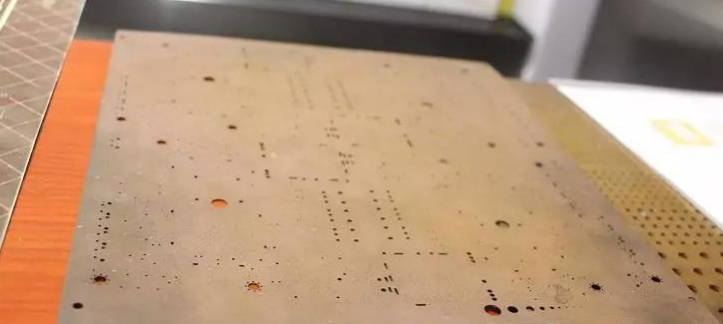01, 2020
by Oree Laser
At present, china’s traditional manufacturing industry is facing a deep transformation and upgrading, and high-end precision machining with high added value and high technological barriers is one of the important directions. With the increase in demand for high-precision machining, related precision machining technologies have also developed rapidly, and laser technology has gained more and more recognition in the market.
The laser processing technology has three levels according to the size and accuracy of the processed material: laser processing technology for large-scale materials mainly composed of medium and thick plates, and processing accuracy is generally at the millimeter or sub-millimeter level; precision laser processing technology mainly for thin plates, its processing accuracy is generally in the order of ten microns; laser microfabrication technology based on various films with a thickness of less than 100μm is generally below 10 microns and even submicron. Today we mainly introduce precision laser processing.
Technical classification | Processing characteristics | Typical application |
Laser precision cutting | Fast speed, smooth and flat incision, generally no subsequent processing required; the cutting heat affected zone is small, and the deformation of the plate is small;high processing accuracy, good repeatability, without damaging the material surface. | PCB board cutting, microelectronic circuit template precision cutting, brittle material cutting |
Laser precision welding | No electrodes and filling materials are required, which is non-contact welding. Welding of high melting point refractory metals or materials of different thicknesses. | Camera welding, sensor welding, power battery welding |
Laser precision drilling | Can punch holes in high hardness, brittle or soft materials, small holes, fast processing speed and high efficiency. | PCB drilling, brittle material drilling |
Laser surface treatment | No additional material is needed, only the structure of the surface layer of the material to be processed is changed, and the deformation of the workpiece is extremely small, which is suitable for high-precision parts processing. | Laser marking, surface cleaning |
Laser precision cutting
Laser precision cutting is the use of a pulsed laser beam to focus on the surface of a processed object to form a high energy density light spot, which melts or vaporizes the processed material at an instant high temperature. Its processing characteristics are high speed, smooth and flat cuts, and generally no subsequent processing is required; the cutting heat affected zone is small, and the plate deformation is small; high processing accuracy, good repeatability, and does not damage the surface of the material.

▲IPhone display
Compared with high-power laser cutting, precision cutting generally uses nanosecond and picosecond lasers according to the processing subject, which can focus on the ultra-fine space area. At the same time, it has extremely high peak power and extremely short laser pulses. In the process of precision cutting, the surrounding materials in the space range involved will not be affected, thus achieving “superfine” processing. In the production process of mobile phone screen cutting, fingerprint identification, LED invisible dicing, etc., which requires high precision, laser precision cutting technology has unparalleled advantages.
Laser precision welding
Laser precision welding is to radiate a high-intensity laser beam to the working area of the processed product. Through the interaction between the laser and the material, the welded place can quickly form a multi-density concentrated heat source area. The heat can melt the area to be welded and then cool Crystals form solid welds. Its characteristic is that it does not require electrodes and filling materials, and is non-contact welding. Welding of high point refractory metals or materials of different thicknesses.
In the field of new energy batteries, with the promotion of new energy vehicles, the demand for power batteries continues to increase. Laser welding is used as a standard configuration in the field of power batteries. It is widely used in the welding of the front poles, the welding of the bottom cover, the top cover and the sealing nails in the middle section, and the battery connection tabs and negative electrode sealing welding in the rear section. In the 3C field, all types of mobile phone modules and mid-plate covers are inseparable from laser precision welding technology.
Laser precision drilling
Laser precision drilling is to reduce the spot diameter to micron level, to obtain high laser power density, laser drilling can be implemented in almost any material. Its characteristics are that it can punch holes in high hardness, brittle or soft materials, small hole diameter, fast processing speed, and high efficiency.

▲PCB punching sample
Laser drilling is the most widely used in the PCB industry. Compared with the traditional PCB drilling process, laser drilling on the PCB not only has a faster processing speed but also enables the drilling of small holes, micro holes and invisible holes below 2 μm that cannot be achieved with traditional equipment. On the surface of electronic products, it can also be used for drilling holes in mobile phone speakers, microphones and other glass.
Laser surface treatment
Laser surface treatment is the use of high-power density laser beams to perform surface treatment on metals, which can achieve phase transformation hardening, surface amorphization, surface alloying, or chemical reactions that cause surface materials to vaporize or change color, thereby changing metal materials surface properties. Its characteristics are that it does not need to use additional materials, and only changes the structure of the surface layer of the processed material. The processed part has minimal deformation, which is suitable for surface marking and high-precision part processing.
Laser surface treatment can be divided into two categories according to whether the composition of the substrate is changed. Applications that do not change the composition of the substrate include laser quenching(phase change hardening), laser cleaning, laser impact hardening, and laser polarication. Applications that change the composition of the substrate include applications such as laser classing, laser plating, laser alloying, and laser vapor deposition.
Professional Laser Cutting Machine Manufacturer - OreeLaser